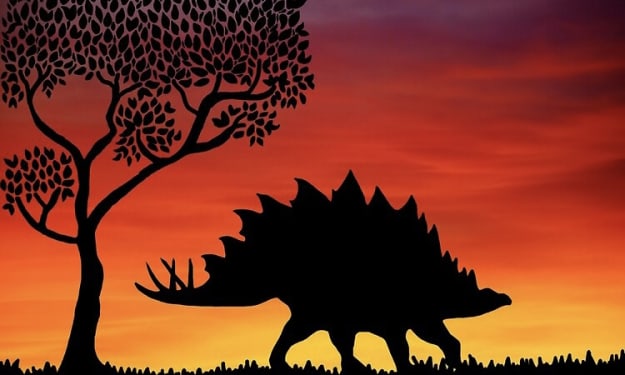
**Title: A Timeless Odyssey: Earth's Epic Journey Through Eons**
**Subtitle:** *A Thousand Words to Witness Earth's Remarkable History and the Human Connection*
**Introduction: The Cosmic Stage**
Gazing upon the vastness of space, Earth emerges as a tiny, pale blue dot suspended in the dark void. Our journey begins with the birth of our Solar System some four and a half billion years ago, as a swirling disc of matter collapsed into a blazing star, giving life to our Sun. This celestial nursery set the stage for a remarkable odyssey that would see Earth transformed from a molten world to a thriving cradle of life.
**Chapter One: A Violent Beginnings**
In its early days, Earth was a turbulent and volatile place. Molten lava erupted from massive volcanoes, spewing gases like hydrogen sulfide, methane, and carbon dioxide into the atmosphere, creating the planet's first primordial atmosphere. Constantly bombarded by large asteroids and comets, Earth endured tumultuous cosmic collisions. The most significant of these was the colossal impact with Theia, a planet the size of Mars, leading to the formation of our Moon.
**Chapter Two: Oceans and the Dawn of Life**
Approximately 3.8 billion years ago, Earth cooled enough for water vapor to condense into liquid form, giving rise to the planet's first primitive oceans. Water, the cradle of life, was now in place. In the waters of these ancient seas, microscopic organisms marked the beginning of life on Earth. These early pioneers, simple and resilient, shaped the planet's evolutionary path.
**Chapter Three: The Greening of Earth**
Around 2.4 billion years ago, a momentous event occurred that would forever change Earth's atmosphere. Cyanobacteria, the first photosynthesizers, emerged, releasing oxygen as a byproduct of photosynthesis. Over time, this oxygenation led to the formation of the ozone layer, which shielded life from harmful ultraviolet radiation. This critical transformation paved the way for more complex life forms to thrive.
**Chapter Four: Continents on the Rise**
Earth's dynamic nature continued to sculpt its surface. Around 1.8 billion years ago, the first supercontinent, Vaalbara, emerged. Continents came and went, forming a cyclic pattern of assembly and dispersal over millions of years. Pannotia and Rodinia were some of the notable supercontinents that once dominated Earth's landscape.
**Chapter Five: The Cambrian Explosion and Marine Life**
Approximately 540 to 485 million years ago, Earth experienced a profound explosion of life known as the Cambrian explosion. During this period, an extraordinary diversity of life forms emerged, including the famous trilobites. This rich marine life laid the foundation for ecosystems that would eventually extend onto land.
**Chapter Six: Mass Extinctions and the Age of Dinosaurs**
Earth's history is punctuated by catastrophic events that reshaped its ecosystems. Around 252 million years ago, the Great Dying, the most devastating mass extinction in history, wiped out approximately 90% of all species. Following this tragedy, the age of dinosaurs dawned, with these colossal reptiles dominating terrestrial landscapes.
**Chapter Seven: Mammals and the Rise of Humans**
The asteroid impact that ended the age of dinosaurs opened the door for mammals to rise to prominence. Over millions of years, mammals diversified and evolved, eventually giving rise to the human species. Around six million years ago, the earliest known humans began walking the Earth, laying the foundation for the story of Homo sapiens.
**Chapter Eight: Humanity's Impact and Modern Challenges**
With the advent of the Industrial Revolution, humanity entered a new era of rapid technological advancement. Urbanization and industrialization transformed human societies, leading to an exponential increase in global population. By 1804, Earth was home to one billion people; by 1927, the population had doubled to two billion. In the span of a few decades, the global population skyrocketed to over 8 billion.
Despite these remarkable achievements, the progress of modern civilization comes at a price. The accelerating human impact on the planet, from deforestation and greenhouse gas emissions to pollution and habitat destruction, poses significant challenges to the delicate balance of Earth's ecosystems. Climate change, driven by human activities, threatens the planet's stability and jeopardizes the future of countless species.
**Conclusion: Guardians of Earth's Legacy**
As we reflect on Earth's extraordinary journey through eons, we are reminded of the profound connection between humanity and our Blue Planet. Our history is intertwined with Earth's history, and we bear the responsibility of safeguarding its future. By embracing sustainable practices, promoting conservation efforts, and fostering environmental stewardship, we can ensure that Earth continues to be a flourishing cradle of life for generations to come. Our timeless odyssey is far from over, and it is within our hands to protect and preserve the beauty and diversity of our remarkable home. Together, let us be the guardians of Earth's legacy, honoring its past as we shape its future.





Comments
There are no comments for this story
Be the first to respond and start the conversation.